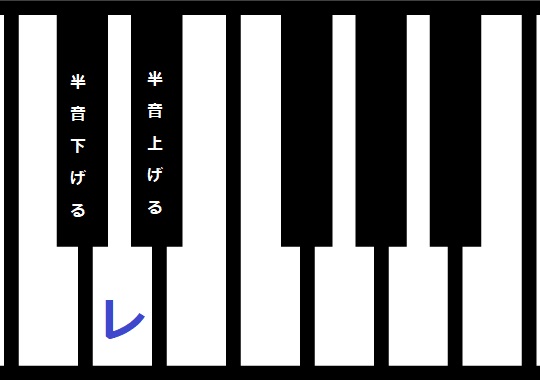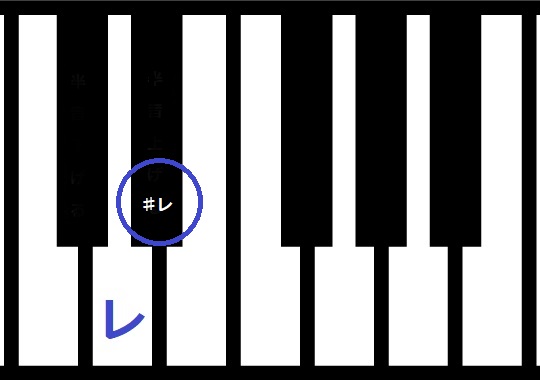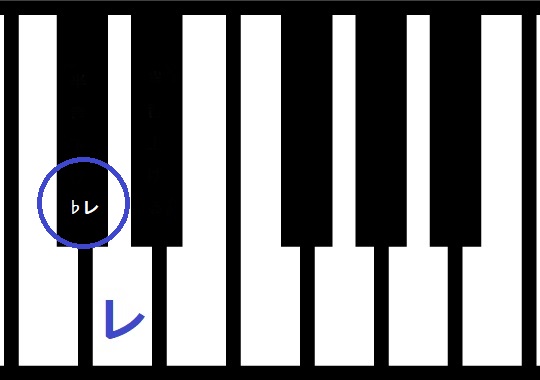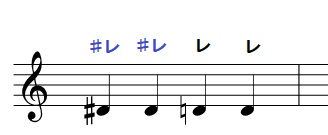今回は楽譜の臨時記号について説明します。
具体的には「シャープ(♯)」「フラット(♭)」「ナチュラル(♮)」です。
名前と記号はなんとなく聞いたことがある方も多いと思います。
ピアノの楽譜においてこれらがどのような意味を持つのか説明します。
※臨時記号と調号は役割が違います。調号については別記事で紹介します。
シャープ(♯)
まずはシャープです。
意味は「半音上げる」となります。
半音上げるとはどういうことでしょうか。
半音上げるとは、わかりやすく言えば一つだけ高い音に変えるということです。
鍵盤では下の図のようになります。

今回はわかりやすいように「レ」の音を基準に考えています。
図を見て分かる通り「レ」を半音上げると「レ」の右隣りの黒鍵になります。(「ミ」ではありません)
つまり下図のような楽譜があった場合、

対応している鍵盤は下図の青い丸の位置になります。

「ド」や「ファ」「ソ」「ラ」も同様にシャープ(♯)がつくと、半音上がることになるので右隣りの黒鍵になります。
これでシャープはバッチリです。
※ほとんど見ることはありませんが、右隣りに黒鍵がない「シ」と「ミ」だけは半音上がると右隣の白鍵になります。
つまり「♯シ」(シのシャープ)は「ド」、「♯ミ」(ミのシャープ)は「ファ」となるのです。
フラット(♭)
フラットの意味は「半音下げる」です。
つまり一つだけ低い音に変えるということです。
鍵盤についてはシャープの説明と同じく下の図のようになります

そのため、「レ」を半音下げると「レ」の左隣りの黒鍵になります。(「ド」ではありません)
下図のような楽譜の場合

対応している鍵盤は下図の青い丸の位置になります。

他の音も同様に左隣の黒鍵になります。
※こちらも左隣に黒鍵がない「ド」と「ファ」に関しては、フラット(♭)がつくと左隣の白鍵(「シ」と「ミ」)になります
臨時記号の有効範囲
臨時記号には有効範囲があります。
「臨時」というくらいですから、以降のすべての音で適用されるわけではありません。
基本的に有効なのは1小節です。

ナチュラル(♮)
ナチュラル(♮)の意味は「これまでの変化記号(♯や♭)を無効にする」です。
そのためたとえ有効範囲内の変化記号であっても、ナチュラル(♮)がつけば一撃で元の音に戻ります。
また、ナチュラル(♮)も同じ臨時記号ですので、有効範囲があります。
まとめると下の図のようになります。

ここまで「レ」が並ぶとゲシュタルト崩壊を起こしてしまいますね(笑)
以上、臨時記号でした。
コメントを残す